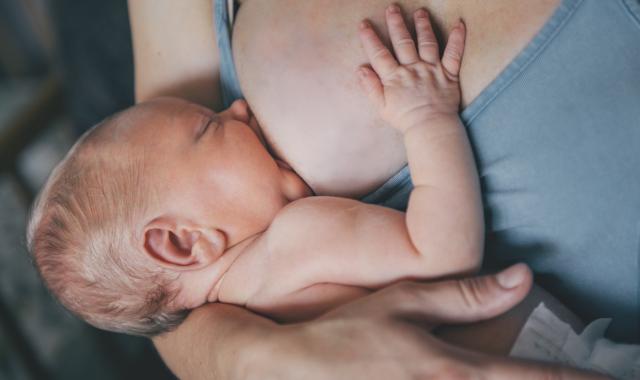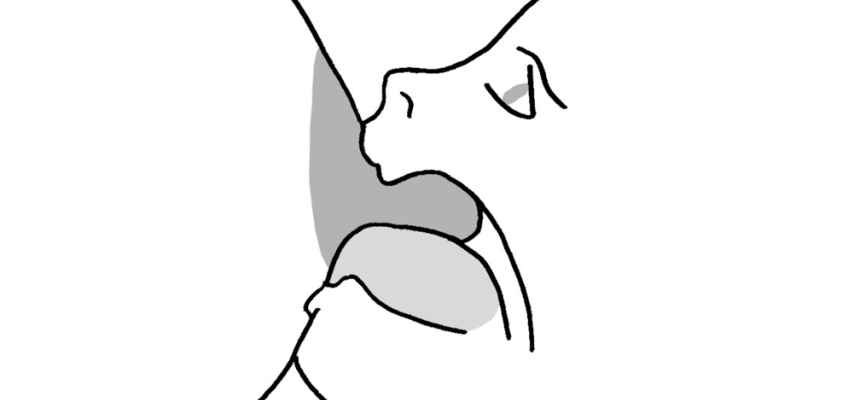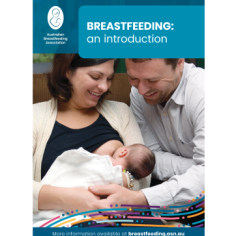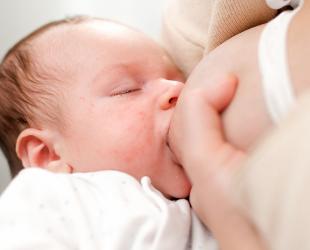Having a baby who attaches well to the breast can help prevent and fix common breastfeeding problems.

You will find breastfeeding comfortable and your baby will be able to remove milk from your breast more easily. This will help you to build up and maintain a good milk supply and your baby will grow well.
Sore, grazed or cracked nipples usually mean your baby is not attached well and has caused some damage. A baby who is finding it difficult to attach may not remove milk from the breast well. This can affect their growth and your supply.
What is happening when your baby attaches to your breast?
They draw your nipple and a large part of your breast into their mouth.
Your nipple will be far back in your baby's mouth (towards the soft palate).
Your baby moves their tongue to its lowest position. This creates a vacuum to remove the milk from your breast to the back of baby’s mouth to be swallowed.
If your baby only takes your nipple into their mouth without a good mouthful of breast (ie they ‘nipple feed’), they may not be able to feed well and it will probably hurt.

Your baby's mouth is wide open with tongue down and forward. Your nipple is aimed at the roof of baby's mouth. The first point of contact is baby's lower jaw or chin on your areola.

Your baby has a large mouthful of breast. Baby's tongue is forward over the gum, the lower lip is rolled out, the chin is pressed into the breast.
If your baby is well attached:
Your baby’s mouth is open wide with a large amount of your breast drawn inside.
Their chin is pressed into your breast.
Their nose is clear or only just touching your breast.
Your baby’s lower lip is turned out and may even be tucked into your breast so not visible. It’s normal for the upper lip to rest in a neutral position.
Their tongue is forward over their lower gum (This may be difficult to see — don’t pull them away to check or you might detach them).
A lot of your areola (the dark part around your nipple) is in your baby's mouth, more so on the 'chin side'.
Your baby’s cheeks will be full and rounded.
It won't be painful. You may feel some discomfort in the early weeks as your baby attaches but once your milk starts to flow, this should settle.
You will be able to see your baby sucking and swallowing rhythmically.
If you notice any of the following, your baby may not be well attached:
It hurts as your baby feeds.
There are clicking sounds.
Your baby’s cheeks are hollowed as they suck.
Your baby is slipping on and off your breast.
Take your baby off and change their position or reattach them. To do this, place a clean finger in the corner of your baby’s mouth between their gums to break the suction and release your nipple.
If it hurts:
Nipples that are creased, ridged or squashed, blistered, cracked or bleeding mean your baby is not properly attached. Your baby doesn't have your nipple far enough back in their mouth and it is being squashed against their hard palate.
Wait for your baby to open their mouth wide and then reattach.
Sometimes a small change in your baby's position can help. For example, hugging the lower half of your baby’s body in, as this helps your baby’s chin to press further into your breast. Check that there is no bunched clothing between you or that your baby’s arm isn't getting in the way.
To help your baby attach well, you may need to check how you are holding them. There are a few different ways you can position your baby to feed.
Steps to attach your baby
- Whichever position you choose, you need to be comfortable with your back and feet supported.
Unwrap your baby and hold them on their side facing towards you. If you like, you can support your baby's neck and back with your forearm or wrist and hand. Try to avoid holding the back of your baby's head - they may use their reflex and push back.
Your baby should be close with their chest touching yours and their head tilted slightly back, at the same level as your breast. Your baby's nose will be level with your nipple.
Gently brush your baby's mouth with the underside of your areola. Your baby should open their mouth wide when you do this. When this happens, their tongue will come forward over their lower gum.
Quickly bring your baby to the breast with your nipple aimed at the roof of their mouth. Baby's lower jaw or chin should touch your breast first, on your areola, well down from your nipple.
As your baby's mouth closes over your breast, they should take in a large mouthful of breast.
If your breasts are engorged, hand express a little milk or use reverse pressure softening to help your baby attach more easily.
Breastfeeding attachment - Global Health Media
(Please note: the still image visible here is of a baby whose attachment has become shallow as they fall asleep at the breast. A baby who is well-attached will have a very wide open mouth with the nipple far back in their mouth)
Links to further videos about positioning and attachment
Can a change in position help relieve nipple pain? - Nancy Mohrbacher
What feeding positions work if I'm large breasted? - Dr Theresa Nesbitt and Nancy Mohrbacher
How do I get my baby to open wide? - Dr Theresa Nesbitt and Nancy Mohrbacher
How can gravity, gaps & gaze simplify early breastfeeding? - Dr Theresa Nesbitt
What adjustments make early breastfeeding easier? - Dr Theresa Nesbitt and Nancy Mohrbacher
Find out more about getting breastfeeding started
Your guide for navigating the first 72 hours with your newborn. Free for Virtual Village members.
The first 72 hours - eModule

Online interactive session free for members
Newborn Virtual Village - Comfortable attachment


© Australian Breastfeeding Association January 2023



